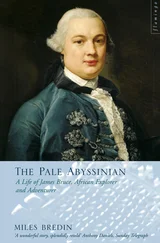Adolphus Greely - Explorers and Travellers
Здесь есть возможность читать онлайн «Adolphus Greely - Explorers and Travellers» — ознакомительный отрывок электронной книги совершенно бесплатно, а после прочтения отрывка купить полную версию. В некоторых случаях можно слушать аудио, скачать через торрент в формате fb2 и присутствует краткое содержание. Жанр: literature_19, foreign_antique, foreign_prose, Путешествия и география, на английском языке. Описание произведения, (предисловие) а так же отзывы посетителей доступны на портале библиотеки ЛибКат.
- Название:Explorers and Travellers
- Автор:
- Жанр:
- Год:неизвестен
- ISBN:нет данных
- Рейтинг книги:3 / 5. Голосов: 1
-
Избранное:Добавить в избранное
- Отзывы:
-
Ваша оценка:
- 60
- 1
- 2
- 3
- 4
- 5
Explorers and Travellers: краткое содержание, описание и аннотация
Предлагаем к чтению аннотацию, описание, краткое содержание или предисловие (зависит от того, что написал сам автор книги «Explorers and Travellers»). Если вы не нашли необходимую информацию о книге — напишите в комментариях, мы постараемся отыскать её.
Explorers and Travellers — читать онлайн ознакомительный отрывок
Ниже представлен текст книги, разбитый по страницам. Система сохранения места последней прочитанной страницы, позволяет с удобством читать онлайн бесплатно книгу «Explorers and Travellers», без необходимости каждый раз заново искать на чём Вы остановились. Поставьте закладку, и сможете в любой момент перейти на страницу, на которой закончили чтение.
Интервал:
Закладка:
In April, 1767, the Santees descended the Minnesota in order, among other things, to bury their dead near a remarkable cave on Lake Pepin, known to the Indians as the “dwelling of the Great Spirit.”
Finding that supplies had not been sent to the Falls of St. Anthony, Carver returned to Prairie-du-Chien in order to get sufficient stores to enable him to reach Lake Superior, whence he hoped to be able to cross the continent from Grand Portage. Obtaining such supplies, he proceeded up the Mississippi to the Chippeway River, and, after ascending to its head, made portages to the St. Croix, and reached Lake Superior, possibly by the river now known as the Bois Brule.
From this point Carver, in his canoe, skirted the coast of Lake Superior to the Grand Portage, where he awaited the arrival of the Hudson Bay or northern traders, from whom he anxiously hoped to obtain supplies that would enable him to journey west; but he was destined to disappointment, as nothing could be obtained from them. Carver coasted around the north and east borders of Lake Superior, and arrived at the Falls of Ste. Marie the beginning of October, having skirted nearly twelve hundred miles of the shores of Lake Superior in a birch canoe.
The Sault Ste. Marie was then the resort of the Algonquin Indians, who frequented the falls on account of the great numbers of whitefish that filled the waters, particularly in the autumn, when that fish leaves the lakes in order to spawn in shallow running waters.
In November, 1767, Carver arrived at Mackinac, having, as he says, “been sixteen months on this extensive tour, travelled nearly four thousand miles, and visited twelve nations of Indians living to the west and north. His picture of Detroit on his return, in 1768, is of retrospective interest.
“The town of Detroit contains upward of one hundred houses. The streets are somewhat regular, and have a range of very convenient and handsome barracks with a spacious parade at the south end. On the west side lies the King’s Garden, belonging to the Governor, which is very well laid out, and kept in good order. The fortifications of the town consist of a strong stockade, made of round piles, fixed firmly in the ground, and lined with palisades. These are defended by some small bastions, on which are mounted a few indifferent cannon of an inconsiderable size, just sufficient for its defence against the Indians or an enemy not provided with artillery. The garrison in time of peace consists of two hundred men, commanded by a field-officer, who acts as chief magistrate under the Governor of Canada.
“In the year 1762, in the month of July, it rained on this town and the parts adjacent a sulphurous water of the color and consistency of ink, some of which being collected in bottles, and wrote with, appeared perfectly intelligible on the paper, and answered every purpose for that useful liquid. Soon after, the Indian wars already spoken of broke out in these parts. I mean not to say that this incident was ominous of them, notwithstanding it is well known that innumerable well-attested instances of extraordinary phenomena, happening before extraordinary events, have been recorded in almost every age by historians of veracity; I only relate the circumstance as a fact, of which I was informed by many persons of undoubted probity, and leave my readers, as I have heretofore done, to draw their own conclusions from it.”
It is beyond question that certain chapters of Carver’s work, supplementary to his account of his personal explorations, and especially devoted to Indians and to the natural history of the Northwest, are practically translations of the accounts of Charlevoix, Hennepin, and particularly of Lahontan. It does not appear from the first part of the work that Carver was a man endowed with those powers of observation and assimilation which are essential traits for the successful traveller and author.
When the brief recital of his personal travels is examined, it seems difficult to determine on what grounds his truthfulness has been questioned by a few hostile critics. His story is simple and straightforward, devoid of boastfulness, free from any exaggeration as to his personal prowess, and the statement that he passed a winter of five months in the valley of the Upper Minnesota is, in my opinion, worthy of entire credence.
Fortunately, however, evidence of the most convincing character exists as to Carver’s residence among the Naudowessies or Santees. The exhaustive bibliography of the Siouan languages, by Mr. James C. Pilling, indicates that Carver is the first author who ever published a vocabulary of the Santee tongue, and its length, eight pages, renders it evident that it was an original compilation which must have required considerable time and patience.
The importance of Carver’s charts and journals at that time was evident to the Lords Commissioners of Trade and Plantations in England to whom Carver was referred when praying for reimbursement of his expenses. Carver appeared before the Board and, after an examination, was granted authority to publish his papers. Later, after Carver had, as he says, disposed of them and they were nearly ready for the press, an order was issued from the Council Board requiring him to immediately turn in all the originals of his charts, journals, and other papers relative to his discoveries.
Meanwhile interest in the extension of English influence into the interior of North America was waning steadily with the growing conviction that the colonies would establish their independence, and the Government had no mind to reimburse an enterprising American, even though he remained loyal. Carver was reduced gradually to the greatest straits, was compelled to sell his book for a pittance, and finally, his end hastened by lack of proper food and suitable attendance, died in the direst poverty in London, January 13, 1780.
His own generation could best judge as to the timeliness and importance of Carver’s exploration, and as to the value of the information set forth in his book of travels. Suffice it to say that no less than twenty-three editions of this book have appeared, in four languages. This, too, at a time when the war of independence naturally destroyed current interest in the extension of English settlements in the interior of North America.
Explorations, however, are wisely esteemed by posterity according to the results which flow therefrom in the shape of definite additions to the knowledge of the world or in the more important direction of disclosing lands suitable for colonization. In this latter manner the exploration of Jonathan Carver and the accounts of his travels had an important influence. They first brought into popular and accessible form information and ideas concerning the interior parts of North America which before had been practically inaccessible to the general public of England and America.
Twenty-five years after this journey toward the “Shining Mountains” and “Oregon, the River of the West,” the ultimate scheme of Carver found its justification in the success of Alexander Mackenzie, a young Scotchman, who was the first white man to cross the continent of America to the north of Mexico; and yet ten years later Lewis and Clark were despatched on their famous expedition which explored the valley of the Columbia, where in 1810, under the energetic management of John Jacob Astor, arose the trading-post of Astoria, thus turning into reality the dreams and aspirations of Jonathan Carver, the soldier and explorer.
IV
CAPTAIN ROBERT GRAY,
Within the past century no American explorer has contributed more materially to the welfare of the United States and to its maritime glory than Captain Robert Gray, the discoverer of the Columbia River and the first circumnavigator who carried the flag of the United States around the world.
Читать дальшеИнтервал:
Закладка:
Похожие книги на «Explorers and Travellers»
Представляем Вашему вниманию похожие книги на «Explorers and Travellers» списком для выбора. Мы отобрали схожую по названию и смыслу литературу в надежде предоставить читателям больше вариантов отыскать новые, интересные, ещё непрочитанные произведения.
Обсуждение, отзывы о книге «Explorers and Travellers» и просто собственные мнения читателей. Оставьте ваши комментарии, напишите, что Вы думаете о произведении, его смысле или главных героях. Укажите что конкретно понравилось, а что нет, и почему Вы так считаете.












